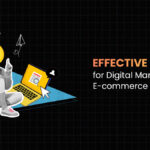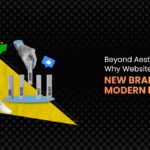When you’re browsing a website and click a button, the last thing you want is to be left hanging, wondering if anything even happened. Today, users expect things to be fast, intuitive, and rewarding. That’s where micro-interactions come in.
Micro-interactions are the little touches in design that go a long way in making a website feel alive, responsive, and user-friendly. If you’re running a business in India, with its fast-growing digital landscape and competitive market, investing in these subtle but powerful design elements could be the key to retaining visitors and turning them into loyal customers.
Here’s why you should care about micro-interactions and how they can elevate your website’s UX.
What Exactly Are Micro-interactions?
Micro-interactions are the tiny animations or design cues that users don’t always notice but absolutely feel. Whether it’s a hover effect, a small animation when submitting a form, or even a progress bar when waiting for something to load, these elements are what make a user’s interaction with your website feel natural.
In fact, a good UI/UX design agency knows how to integrate these small details into the website so users feel connected. They also make sure to optimise the micro-interactions for the market, where fast load times, minimalistic design, and quick feedback loops are non-negotiable.
Why Do Micro-Interactions Matter for Businesses?
Our digital landscape is growing at an exponential rate, which means more competition. To stand out, your website needs to not only be functional but also delightful to use. Micro-interactions can give your site the polish it needs to ensure users stay engaged and move smoothly through your site.
1. Instant Feedback Means No Guessing
Let’s say a user is filling out a form on your website. They type in their information, click submit, and… nothing happens. Confusion sets in. But, what if, instead, that submit button slightly pulses, showing the user that the action has been taken? Or the page changes colour to confirm the action? Instant feedback like this is a simple way to make users feel more confident.
When you hire someone for UI/UX consulting services, they understand that feedback mechanisms are crucial to helping your users know they’re on the right path. Micro-interactions provide this reassurance at every step of their journey.
2. Speeding Things Up (Even If Your Site Isn’t)
Everyone hates slow-loading websites. But here’s the thing, micro-interactions make a slow page feel faster. Instead of watching a blank screen, users get a progress bar or an animated loader that keeps them engaged. These interactions trick the brain into thinking that things are moving forward. It’s a psychological UX design, and it works.
With UI/UX design services tailored to your business needs, your site can feel quick, engaging, and responsive, even during those moments when it’s processing behind the scenes.
3. Guiding Users Without Being Annoying
A good website doesn’t need a lot of hand-holding. But sometimes, users need a little nudge. Micro-interactions can guide users without being overwhelming. Take a look at these examples:
- Hover effects on buttons to show they’re clickable.
- Animations when a form field is incomplete or incorrect (instead of just a static error message).
- A visual change in navigation menus that shows users where they are on the site.
Incorporating these into your design can make your website feel more intuitive and help users understand where to go next without having to read every instruction. It’s the job of a UI/UX agency to know where these subtle interactions will have the most impact.
4. Adding personality
Micro-interactions allow your website to express personality in ways that text and images can’t. A smooth animation, a witty error message, or a subtle visual effect can all turn an otherwise boring moment into something engaging.
Let’s say your website has a product page, and when someone adds an item to their cart, a confetti animation appears or a tiny bounce effect to show the cart has been updated. It doesn’t take much, but it makes the user feel rewarded. These moments create a sense of fun and satisfaction, making your website feel more human and approachable.
Where Should You Use Micro-Interactions?
So, where should you focus your micro-interaction efforts? Here are the places that can benefit the most from these tiny tweaks:
- Buttons and Call-to-actions: Micro-interactions here make it clear that the user’s click has been registered. A colour change or animation signals that the action is in progress.
- Forms and sign-ups: A little shake when a field is missed, or an animation for error messages, will help users understand what went wrong and keep them engaged.
- Loading screens: Add a progress bar or fun animations to reduce frustration when pages take time to load. Users appreciate feedback during these waits.
- Notifications: A simple slide-in or fade effect for notifications makes them feel less intrusive, creating a smooth experience for users.
At 3 Minds, we understand the power of micro-interactions. Whether you’re looking for UI/UX design consulting services or need a complete redesign, we’ve got you covered.



